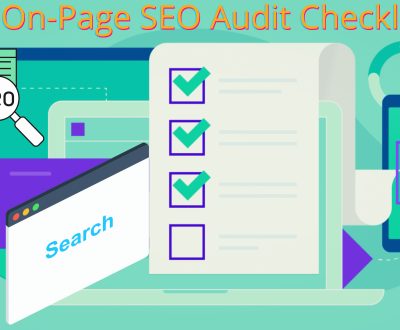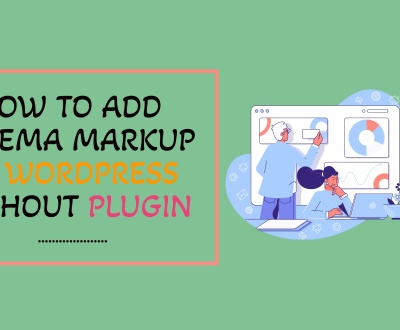How to Optimize Meta Tags for Better Click-Through Rates (CTR): A Comprehensive Guide
In today’s competitive online landscape, simply having a website isn’t enough. To stand out in search engine results, you need to optimize your web pages to attract more clicks. Meta tags, particularly meta titles and meta descriptions, play a significant role in improving your Click-Through Rates (CTR). A higher CTR means more traffic, better search rankings, and ultimately, more conversions for your business.
This guide will walk you through how to optimize your meta tags to boost your CTR and improve the effectiveness of your SEO strategy.

What Are Meta Tags?
Meta tags are snippets of text in the HTML code of a webpage that provide search engines and web crawlers with information about the content of the page. While meta tags don’t directly impact search engine rankings, they do influence how your pages appear in search results, which can significantly affect your CTR.
Two key types of meta tags are crucial for optimization:
- Meta Title (Title Tag) – This is the title that appears in search engine results as the clickable headline for your webpage.
- Meta Description – A summary of your page content that appears under the title tag in search results.
In this guide, we will focus on optimizing meta titles and meta descriptions to enhance CTR.
Why Meta Tags Matter for CTR
- Improved Visibility
Meta titles and descriptions act as the first point of interaction between your website and users on search engine results pages (SERPs). Optimizing these elements makes it more likely that users will click on your link rather than someone else’s. - Better User Experience
A well-crafted meta description provides clear information about what the page is about, setting correct expectations for users. This leads to more qualified traffic, which is more likely to convert into customers. - Increased Relevance
Search engines like Google often use meta tags to assess whether your webpage is relevant to the user’s search query. By optimizing your meta tags, you can make sure they align with what users are searching for.
How to Optimize Meta Titles for Better CTR
- Incorporate Relevant Keywords
Your meta title should contain relevant keywords that align with the search query of your target audience. Use tools like Google Keyword Planner or SEMrush to identify the most relevant and high-volume keywords for your page. The goal is to make sure your title resonates with what users are looking for.
Example:
If you run an e-commerce store selling running shoes, a title like “Buy Running Shoes Online | Best Deals on Nike, Adidas, and More” is more compelling than just “Running Shoes.”
- Keep It Concise (50-60 Characters)
Search engines typically display the first 50-60 characters of the meta title. If your title exceeds this length, it will be cut off, which may lead to the loss of important information. Aim to keep your meta title within this range to ensure it’s fully visible. - Make It Engaging
Your meta title should be attention-grabbing and compelling to the user. Use power words like “Best,” “Top,” “Exclusive,” “Free,” or “Limited-Time Offer” to make it sound more enticing. The goal is to encourage users to click on your link over others. - Branding
Incorporating your brand name in the meta title, especially for homepages or high-authority pages, can help increase brand awareness. It also adds trustworthiness to your page in the eyes of users.
Example:
“Buy Stylish Running Shoes Online | XYZ Sports”
- Avoid Keyword Stuffing
Keyword stuffing—using the same keyword multiple times in the title—can make your meta title look unnatural and spammy. Instead, focus on readability and flow. A natural-sounding title will perform better in the long run.
How to Optimize Meta Descriptions for Better CTR
- Summarize the Content Clearly
Your meta description should provide a concise, compelling summary of the page’s content. Think of it as a sales pitch that persuades users to click. The meta description should tell them exactly what value they will get by visiting your page.
Example:
“Explore our wide range of running shoes. Get the best deals on Nike, Adidas, and more. Free shipping on all orders!”
- Include a Call to Action (CTA)
Adding a clear call to action like “Shop Now,” “Learn More,” or “Get Started” gives users a reason to click. It tells them what action to take next and can increase your CTR.
Example:
“Browse our collection of top-rated running shoes. Shop now and enjoy fast, free shipping!”
- Keep It Between 150-160 Characters
Meta descriptions should be short and to the point. The optimal length is around 150-160 characters. If your description exceeds this length, it will be truncated, cutting off important information. Make sure to fit the most critical details within this character limit.
- Include Keywords
While meta descriptions don’t directly impact rankings, including relevant keywords can increase the likelihood that your link will catch a user’s eye in search results. Google often highlights the keywords that match the user’s query, making your result stand out.
Example:
“Shop high-quality running shoes online. Find the best Nike, Adidas, and more with unbeatable prices!”
- Focus on User Intent
Your meta description should align with the searcher’s intent. If someone is searching for “buy running shoes,” your description should emphasize that your page offers an easy and convenient shopping experience for running shoes. Understanding the search intent of your target audience is key to writing effective meta descriptions.
How to Optimize Meta Tags for Local SEO and Improve CTR
If you have a local business, optimizing your meta tags for local SEO is crucial. Here’s how:
- Include Location Keywords
If your business serves a particular city or region, make sure to include location-based keywords in both your meta title and description. This can help your page appear in local search results.
Example:
“Best Running Shoes in New York | XYZ Sports”
- Add Local Landmarks or Neighborhoods
If relevant, include local landmarks, neighborhoods, or specific areas in your meta tags. This helps users who are looking for businesses in a specific area find you more easily.
Example:
“Top Running Shoes Near Central Park, NYC | XYZ Sports”
Additional Tips for Meta Tag Optimization
- Use Schema Markup
Implementing schema markup can enhance your meta tags and help search engines display rich snippets in search results. This can improve CTR by providing more information, such as ratings, prices, or availability. - Monitor Performance
Regularly monitor the performance of your meta tags using Google Search Console. Analyze CTR for each page and make adjustments to your meta titles and descriptions if you notice any pages underperforming.
Conclusion
Optimizing your meta tags is a simple yet powerful way to boost your Click-Through Rate (CTR) and drive more traffic to your website. By focusing on compelling meta titles, clear descriptions, and incorporating relevant keywords, you can increase the chances of your website being clicked on in search results.
Remember, your meta tags are often the first impression users will have of your content, so make sure they accurately represent the value you’re offering. With the right strategy in place, you’ll see improved engagement and more visitors flocking to your site.
Start optimizing your meta tags today and watch your CTR and overall SEO performance grow!
Check out these related posts
On-Page SEO Audit Checklist: A Complete Step-by-Step Guide
How to Add Schema Markup to WordPress Without Plugin
How Much Do Link Building Services Cost?
About us and this blog
We are a digital marketing company with a focus on helping our customers achieve great results across several key areas.
Request a free quote
We offer professional SEO services that help websites increase their organic search score drastically in order to compete for the highest rankings even when it comes to highly competitive keywords.
Subscribe to our newsletter!
More from our blog
See all postsWarning: Trying to access array offset on value of type bool in /home/rihawebtech/public_html/wp-content/plugins/live-composer-page-builder/modules/posts/module.php on line 3262
Recent Posts
- How to Add an Internal Link in WordPress April 11, 2025
- How to Optimize Meta Tags for Better Click-Through Rates (CTR): A Comprehensive Guide April 11, 2025
- On-Page SEO Audit Checklist: A Complete Step-by-Step Guide March 13, 2025







